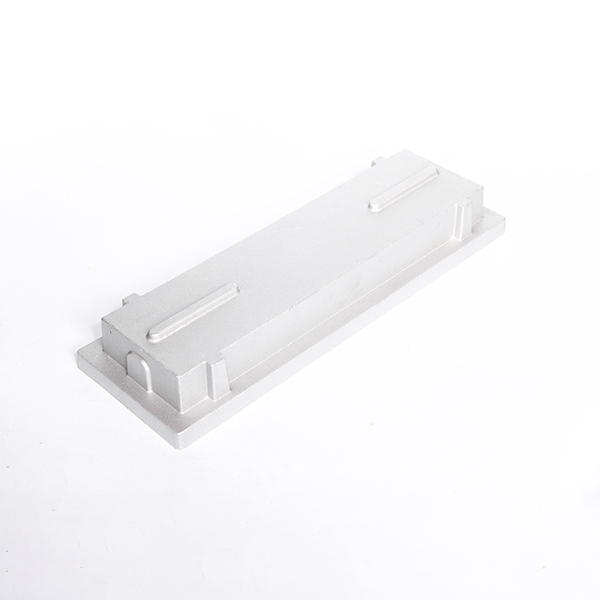Mobile:+86-311-808-126-83
Email:info@ydcastings.com
English
Exploring the Benefits and Applications of Aluminum Alloy Casting in Modern Manufacturing Processes
Aluminum Alloy Casting An Overview of Techniques and Benefits
Aluminum alloy casting is a vital manufacturing process that plays a crucial role in various industries, including automotive, aerospace, and consumer goods. This technique involves the melting of aluminum and its alloying elements to create a liquid that is then poured into a mold to form a solid shape upon cooling. The versatility and exceptional properties of aluminum alloys make them a preferred choice for many applications.
Types of Aluminum Alloys
Aluminum alloys are generally categorized into two main groups wrought and cast alloys. Cast alloys, designed specifically for casting processes, are identified by a four-digit number system. The first digit indicates the primary alloying element, with common categories being silicon (4xxx), copper (2xxx), and magnesium (5xxx). Each alloy exhibits distinct characteristics, such as corrosion resistance, strength, and machinability.
Silicon-based alloys, such as A356 and A380, are popular in casting due to their excellent fluidity, low shrinkage, and good mechanical properties. These alloys provide a balance of strength and ductility, making them ideal for a variety of applications, from automotive parts to intricate consumer electronics casings.
Casting Techniques
There are several casting techniques employed in aluminum alloy casting, each with its unique advantages
1. Sand Casting This is one of the oldest and most widely used casting methods. A mold is formed using sand, which can be easily shaped and is cost-effective for producing low to medium volumes. Sand casting is particularly beneficial for large parts and complex geometries.
2. Die Casting Die casting is a high-volume production method that involves forcing molten aluminum alloy into a steel mold at high pressure. This process yields parts with excellent surface finish and dimensional accuracy, making it ideal for small to medium-sized components, such as housings and structural parts.
3. Investment Casting Also known as lost-wax casting, this technique involves creating a wax model that is coated with a ceramic shell. Once the shell hardens, the wax is melted away, allowing molten aluminum to fill the cavity. Investment casting is optimal for intricate designs and offers high precision, making it popular in the aerospace and medical device industries.
aluminum alloy casting

4. Gravity Casting In gravity casting, molten aluminum is poured into a mold and allowed to fill via gravity. This method is less expensive than pressure die casting and is often used for larger components with lower production volumes.
Advantages of Aluminum Alloy Casting
The use of aluminum alloys in casting processes offers numerous advantages
- Weight Savings Aluminum is significantly lighter than steel and many other metals, making it an excellent choice for weight-sensitive applications, particularly in the automotive and aerospace sectors.
- Corrosion Resistance Aluminum naturally forms a protective oxide layer, making it highly resistant to corrosion. This property increases the lifespan of cast components in harsh environments.
- Heat Dissipation Aluminum has a high thermal conductivity, which makes it an ideal material for heat exchangers and engine components where heat management is critical.
- Recyclability Aluminum is highly recyclable, and recycling uses only a fraction of the energy required to produce new aluminum. This sustainability aspect contributes to reduced environmental impact.
Conclusion
Aluminum alloy casting is a sophisticated process that effectively combines the lightweight characteristics and durability of aluminum with advanced manufacturing techniques. Its diverse range of casting methods and alloys allows for the creation of intricate, high-quality components that meet the demanding needs of modern industries. As technology advances, the growth and optimization of aluminum alloy casting will continue to drive innovation across various sectors, making it an essential component of future engineering solutions.
-
High-Performance Automobile Water Pump & Electric SolutionsNewsAug.30,2025
-
Expert Stainless Steel Casting | Precision & Durable Metal PartsNewsAug.29,2025
-
Precision Metal Castings: Aluminum, Stainless Steel & Die CastingNewsAug.28,2025
-
Superior Aluminum Castings in Automotive Engine PartsNewsAug.22,2025
-
Common Materials Used in Fan Housing ManufacturingNewsAug.22,2025
-
Symptoms of a Stuck Automobile Water Pump ImpellerNewsAug.22,2025











